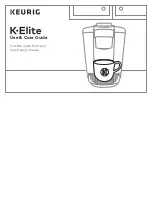
DTM426 DTM427
14
9 Operation
9.1 J1939 interface
The RFID read/write heads have a standardised SAE J1939 interface. All measured values and
parameters can be accessed via the J1939 protocol. The individual configuration can be saved in the
internal permanent memory.
Structure of the SAE J1939 protocol
The SAE J1939 protocol uses a 29-bit CAN identifier (extended frame format CAN 2.0B). A J1939
message has the following structure:
J1939 message
29-bit CAN identifier
Data
Priority
Parameter Group Number
(PGN)
Source address
User data of the message
28…26
25…8
7…0
0…8 bytes
▼
Parameter Group Number (PGN)
Ext. Data Page
Data Page
PDU Format (PF)
Target address / group exten-
sion (PS)
25
24
23…16
15…8
▼
PDU format 1 (specific)
00h - EFh
Target Address (DA)
23…16
15…8
PDU format 2 (global)
F0h - FFh
Group Extension (GE)
23…16
15…8
PDU format 1
This format defines a message which is sent to a defined device. In this case the PDU-specific byte
(PS) is the target address (DA) of the device. If the value of the PDU format field (PF) is between 0x00
and 0xEF, it is a PDU format 1 message.
For proprietary messages (manufacturer-specific) the PDU format value 0xEF is defined.
Ext. data page bit = 0 and data page bit = 0.
PDU format 2
This format defines a message which is sent globally. In this case the PDU specific byte (PS)
corresponds to the group extension (GE). If the value of the PDU format field (PF) is between 0xF0
and 0xFF, it is a PDU format 2 message.
For proprietary messages (manufacturer-specific) the area PDU format (PF) and group extension (GE)
0xFF00 – 0xFFFF is defined.
Ext. data page bit = 0 and data page bit = 0.








































